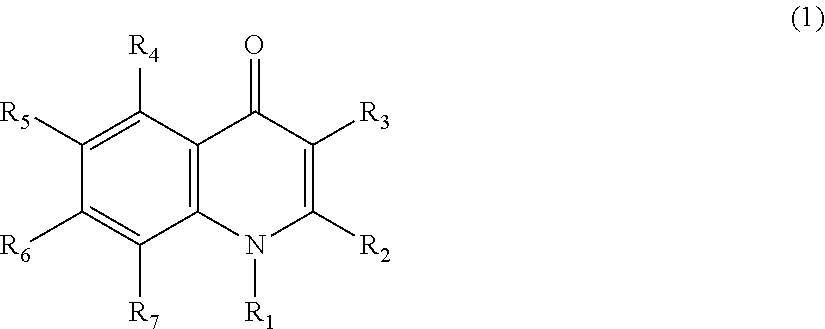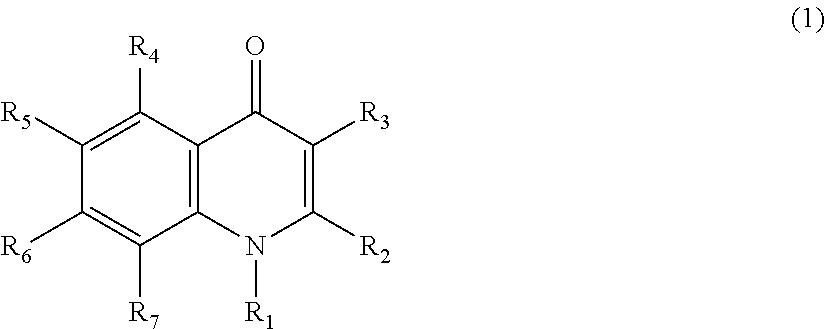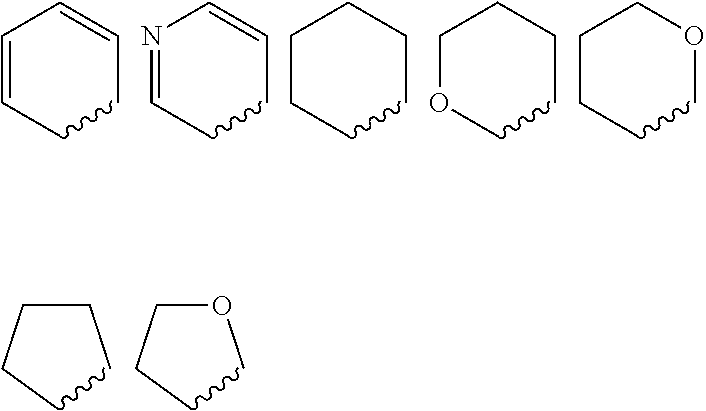Quinolone compound and pharmaceutical composition
- Summary
- Abstract
- Description
- Claims
- Application Information
AI Technical Summary
Benefits of technology
Problems solved by technology
Method used
Image
Examples
reference example 1
[0358]
Production of N-(3-hydroxynaphthalen-2-yl)acetamide
[0359]An acetone solution (60 ml) of 3-amino-2-naphthol (5.0 g, 31.4 mmol) was added to an aqueous solution (20 ml) of sodium carbonate (4.77 g, 34.5 mmol). The mixture was cooled in an ice-water bath, and then acetyl chloride (2.27 ml, 32.0 mmol) was added to the mixture dropwise over 5 minutes. The resulting mixture was stirred at 0° C. for 4 hours and then allowed to stand at room temperature overnight. 2N Hydrochloric acid was added to the reaction mixture to adjust its pH to 3. The generated insoluble matter was separated, washed with water, and then dried, giving a white powder of N-(3-hydroxynaphthalen-2-yl)acetamide (4.9 g, yield: 78%).
reference example 2
[0360]
Production of N-(3-propoxynaphthalen-2-yl)acetamide
[0361]N-(3-Hydroxynaphthalen-2-yl)acetamide (4.87 g, 24.2 mmol) was suspended in acetonitrile (50 ml). A 1-iodopropane (4.52 g, 26.6 mmol) acetonitrile solution (40 ml) and potassium carbonate (4.35 g, 31.5 mmol) were added thereto, and the resulting mixture was stirred for 3 hours while heating under reflux. The mixture was then cooled to room temperature and concentrated to dryness under reduced pressure. Water was added to the residue, followed by extraction using dichloromethane. The thus-obtained organic layer was concentrated to dryness under reduced pressure, and the residue was then purified using silica gel column chromatography (dichloromethane:ethyl acetate=20:1). The purified product was concentrated to dryness under reduced pressure, giving a white powder of N-(3-propoxynaphthalen-2-yl)acetamide (5.64 g, yield: 96%).
reference example 3
[0362]
Production of 3-propoxynaphthalen-2-ylamine
[0363]N-(3-Propoxynaphthalen-2-yl)acetamide (2.5 g, 10.2 mmol) was dissolved in ethanol (10 ml). Concentrated hydrochloric acid (5.2 ml) was added thereto, and the resulting mixture was stirred for 4 hours while heating under reflux. The reaction mixture was cooled to room temperature, and a 5N aqueous sodium hydroxide solution (12.5 ml) was added thereto to adjust its pH to 11, followed by extraction using dichloromethane. The thus-obtained organic layer was concentrated to dryness under reduced pressure, and the residue was then purified using silica gel column chromatography (dichloromethane). The purified product was concentrated to dryness under reduced pressure, giving a white powder of 3-propoxynaphthalen-2-ylamine (2.05 g, yield: 100%).
PUM
 Login to View More
Login to View More Abstract
Description
Claims
Application Information
 Login to View More
Login to View More - R&D
- Intellectual Property
- Life Sciences
- Materials
- Tech Scout
- Unparalleled Data Quality
- Higher Quality Content
- 60% Fewer Hallucinations
Browse by: Latest US Patents, China's latest patents, Technical Efficacy Thesaurus, Application Domain, Technology Topic, Popular Technical Reports.
© 2025 PatSnap. All rights reserved.Legal|Privacy policy|Modern Slavery Act Transparency Statement|Sitemap|About US| Contact US: help@patsnap.com



